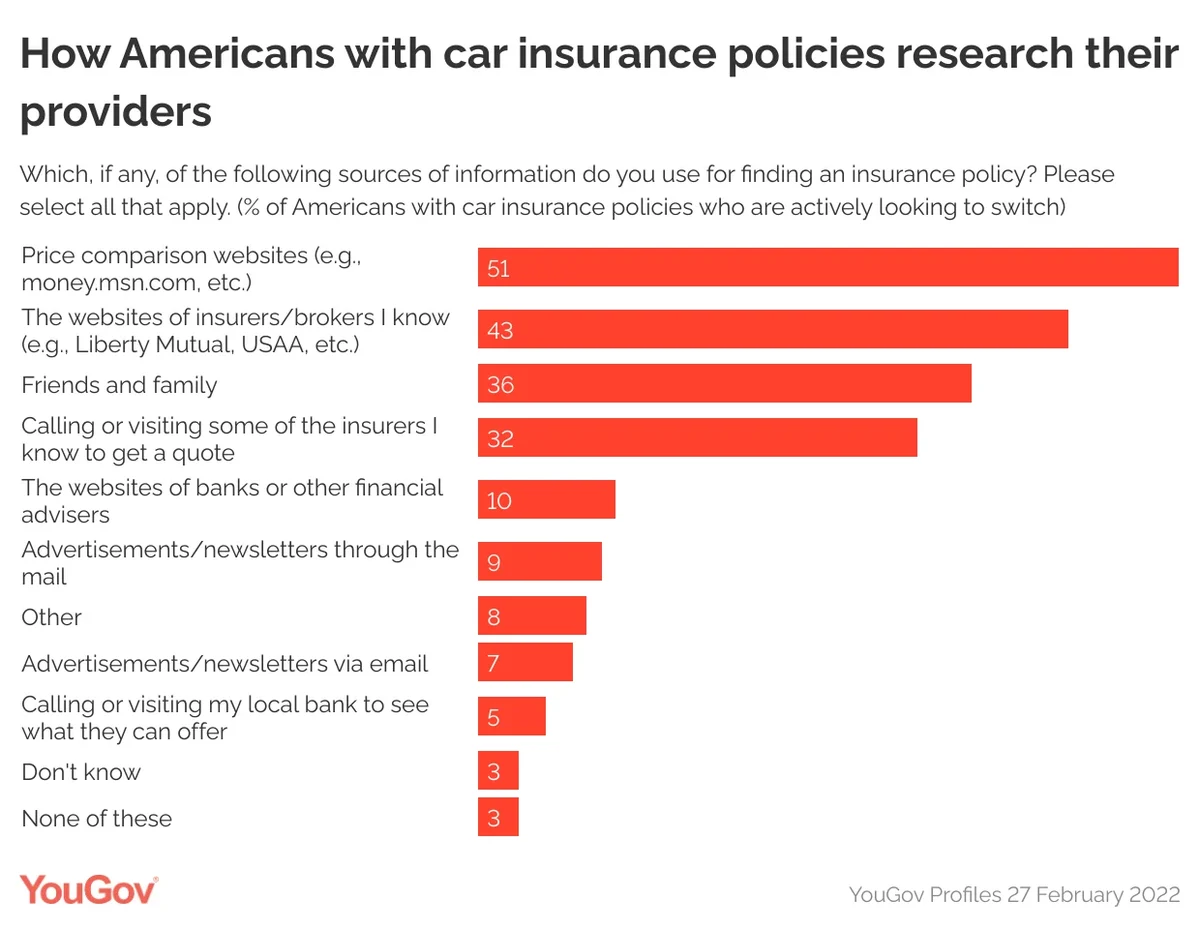
How do Americans research car insurance policies?
Data from YouGov Profiles allows us to delve into the motivations of Americans with car insurance policies when it comes to selecting new providers. It reveals that, in total, a third (33%) are actively shopping around for a better deal, compared to two in five (41%) who say they are inactive (either sticking with their current provider or not looking for a different one particularly hard) and a fifth who describe themselves as “neither active nor inactive” (19%).

But where are they looking when it’s time to switch? Our research shows that half (51%) of policyholders who are looking to make a change use price comparison sites, with more than two in five (43%) using the websites of insurers or brokers that they know.
Nearly as important as the company website is word of mouth. Recommendations from friends and family play a part for over a third (36%) of those looking to switch – so ensuring that current customers are happy may well create more customers. A third (32%) also call up or visit insurers to get a specific quote, so tailor-made service may also play a role.
A wider gap opens up between this method and the rest. Just one in ten, for example, use the websites of banks or financial advisers (10%) or advertisements/newsletters through the mail (9%), and even fewer rely on email ads and newsletters. A mere 5% call or visit their local bank to see what’s on offer.
Switching presents both an opportunity and a danger for providers, who can benefit from wantaway policyholders – while being mindful that, should their offering fail to meet customer standards, their own audience may be tempted away in turn. YouGov Profiles can provide even more insight to car insurance brands looking to understand their audience.
Methodology
YouGov Profiles is based on continuously collected data and rolling surveys, rather than from a single limited questionnaire. Profiles data is nationally representative and weighted by age, gender, education, region, and race. Learn more about Profiles.
































